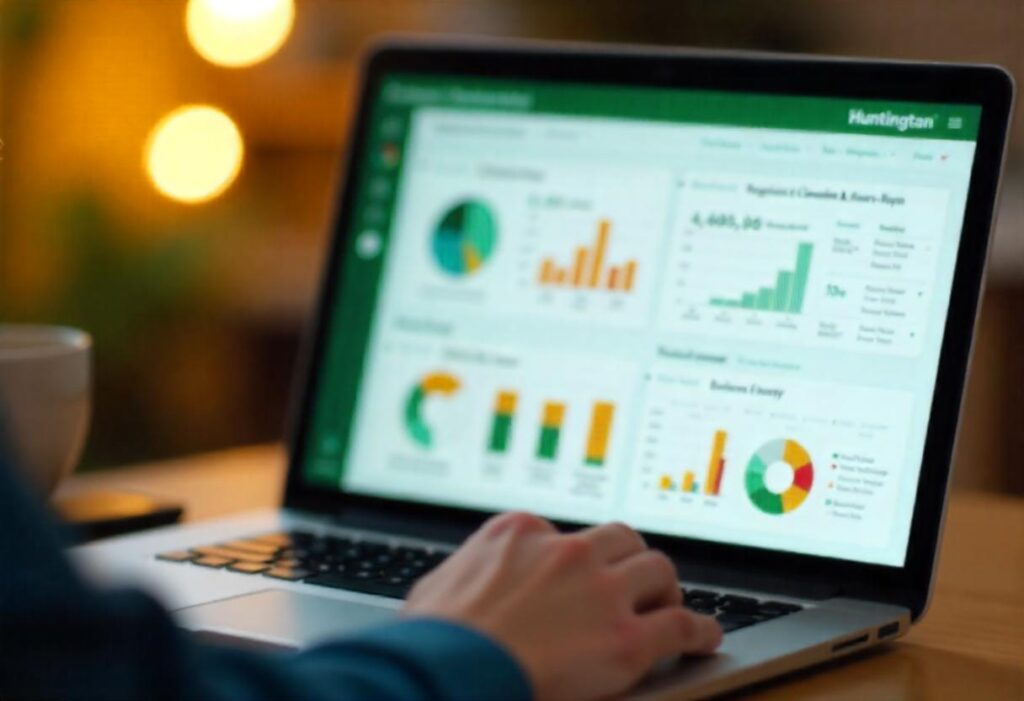Have you ever looked at a soda can or an old bicycle and thought about what happens to it when it’s no longer used? Well, a lot of it gets recycled! Recycling is like giving old things a brand-new life. Instead of ending up in a landfill, these items are transformed into new products.
And here’s the cool part: you can make money with scrap metal by helping with this important recycling process. Scrap metal includes things like aluminum cans, copper pipes, and even old car parts.
In 2025, recycling will be even more crucial for our planet, and knowing how to find, sort, and sell scrap metal can be a fantastic way to earn some extra money while also helping the environment. This article will be your guide to understanding how you can make money with scrap metal in the years to come.
How to Start a Scrap Metal Business
So, you’re interested in learning how to make money with scrap metal by starting your own little scrap metal business? That’s a fantastic idea! It’s like becoming a recycling superhero and getting paid for it. Starting any business takes a little planning, but it’s totally doable. Here are some simple steps to get you started:
First, you need to learn about different types of metals. It’s important to know the difference between ferrous metals and non-ferrous metals. Ferrous metals contain iron, like steel and cast iron.
A magnet will stick to them. Non-ferrous metals don’t have iron, like aluminum, copper, and brass. A magnet won’t stick to these. Knowing this difference is super important because some metals are worth more money than others.
Also Read : Top 10 Features of Huntington Online Banking You Should Know
For example, copper is usually worth more than steel. Learning about scrap metal prices is also a key part of how to make money with scrap metal. These prices can change, so it’s good to check them regularly at local scrap yards or online.
Next, you need to find sources of scrap metal. Where can you find it? Well, there are lots of places! You can ask your family, friends, and neighbors if they have any old appliances, pipes, or other metal items they don’t need anymore. You can also check with local businesses like construction sites (with permission, of course!), plumbers, and electricians. Sometimes, they have leftover metal scraps that they’re happy to get rid of.
Remember to always ask permission before taking any scrap metal from someone else’s property. This is a very important part of how to make money with scrap metal the right way.
Once you have some scrap metal, you’ll need a way to transport it. A wagon, a wheelbarrow, or even a pickup truck (if you have an adult to help) can work. You’ll also need a safe place to store your scrap metal until you’re ready to sell it.
A garage, a shed, or even a corner of your backyard (with permission from your parents or guardians) can work. Just make sure it’s a safe and organized space. Sorting your metal is also a great way to make money with scrap metal as you will get more money if you have it sorted by type.
Finally, you need to find a place to sell your scrap metal. These places are called scrap yards or metal recycling centers. They’ll weigh your metal and pay you based on the current scrap metal prices. Before you go, it’s a good idea to call a few different scrap yards to compare prices and see who is offering the best deal. This is a smart way to make money with scrap metal.
Here’s a simple table to help you remember the steps:
| Step | What to Do |
|---|---|
| 1. Learn about Metals | Know the difference between ferrous and non-ferrous metals. Check prices. |
| 2. Find Scrap Metal | Ask people, check with businesses (with permission). |
| 3. Transport & Store | Use a wagon, truck, etc. Find a safe storage space. |
| 4. Sell Your Scrap Metal | Find a scrap yard and compare prices. |
How to Identify Valuable Scrap Metal
Now that you know how to get started with a scrap metal business, it’s time to learn how to identify valuable scrap metal. Knowing which metals are worth more is a big part of how to make money with scrap metal. It’s like being a metal detective! Here’s what you need to know:
One of the easiest ways to tell metals apart is by using a magnet. As we talked about before, ferrous metals contain iron, so a magnet will stick to them. These include steel, cast iron, and other iron alloys. While these metals are recyclable, they’re generally not as valuable as non-ferrous metals. Non-ferrous metals do not contain iron, and a magnet won’t stick to them.
These include aluminum, copper, brass, and stainless steel. These are often worth more money. So, if your magnet doesn’t stick, you might have something valuable! This is a simple but effective way to make money with scrap metal.
- Copper is one of the most valuable scrap metals. It’s often used in electrical wiring, plumbing pipes, and roofing materials. Copper usually has a reddish-brown color, but it can sometimes turn green over time. If you find thick copper wire or pipes, you’ve likely found something valuable. This is a great way to make money with scrap metal.
- Aluminum is another common and valuable scrap metal. It’s lightweight and silvery-gray in color. You can find aluminum in soda cans, window frames, and car parts. It’s easy to crush aluminum cans, which can save space when you’re storing them. Collecting aluminum is an easy way to make money with scrap metal.
- Brass is a yellowish metal that’s often used in plumbing fixtures, doorknobs, and musical instruments. It’s a mix of copper and zinc. Brass can look similar to gold, but it’s usually not as shiny. Finding brass is another good way to make money with scrap metal.
- Stainless steel is a strong and shiny metal that’s used in appliances, kitchen sinks, and cutlery. It’s resistant to rust and corrosion. Stainless steel usually has a silvery-gray color and a polished look. Although it is ferrous (a magnet will lightly stick), it is still valuable and a good way to make money with scrap metal.
Also Read : 10 Proven Ways to Make Money with Canva in 2025
Here’s a table summarizing the different types of metal:
| Metal | Magnet Test | Color | Common Uses | Value |
|---|---|---|---|---|
| Copper | No | Reddish-brown/Green | Wiring, pipes, roofing | High |
| Aluminum | No | Silvery-gray | Cans, window frames, car parts | Medium |
| Brass | No | Yellowish | Plumbing fixtures, doorknobs, instruments | Medium |
| Steel | Yes | Gray | Construction, cars, appliances | Low |
| Stainless Steel | Slightly | Silvery-gray/Shiny | Appliances, sinks, cutlery | Medium |
Remember, these are just some of the most common types of scrap metal. Learning to identify them correctly is an important part of how to make money with scrap metal.
Tips for Maximizing Scrap Metal Sales

So, you’ve learned how to identify different metals and where to find them. Now, let’s talk about how to make money with scrap metal by getting the best price when you sell it. Here are some helpful tips for maximizing your scrap metal sales:
Cleaning Your Scrap Metal: Just like cleaning your room makes it look nicer, cleaning your scrap metal can make it more valuable. Removing dirt, rust, and other debris can help scrap yards better assess the quality of the metal.
For example, if you have copper pipes covered in dirt, cleaning them off will reveal the shiny copper underneath, making it more appealing and potentially worth more. This is a simple way to make money with scrap metal.
Sorting Your Scrap Metal: Imagine if all your toys were mixed up in one big bin. It would be hard to find what you’re looking for, right? The same goes for scrap metal. Sorting your metal by type (copper with copper, aluminum with aluminum, etc.) makes it much easier for scrap yards to process it.
This is a very important part of how to make money with scrap metal because you will get better prices for sorted metal. Scrap yards often have different bins or areas for each type of metal, and they’ll appreciate it if you’ve already done the sorting for them.
Knowing Current Scrap Metal Prices: Just like the price of candy can change at the store, the price of scrap metal can also change. It’s a good idea to check current scrap metal prices before you go to the scrap yard.
You can usually find these prices online or by calling different scrap yards in your area. This will help you know if you’re getting a fair price and is a smart way to make money with scrap metal.
Also Read : 12 Key Factors Affecting Aviation Fuel Prices You Should Know
Finding the Right Scrap Yard: Not all scrap yards are the same. Some might offer better prices than others. It’s a good idea to call around to a few different scrap yards and compare their prices before you decide where to sell your metal.
You can also ask about their policies on different types of metal and how they weigh it. Finding the right scrap yard is a key part of how to make money with scrap metal.
Collecting in Larger Quantities: Often, scrap yards will pay more per pound or kilogram if you bring in larger amounts of metal. So, if you have the space to store it, it might be worth waiting until you have a larger load before you go to the scrap yard. This can help you make money with scrap metal more efficiently.
Here’s a table summarizing these tips:
| Tip | Why It Helps |
|---|---|
| Cleaning Your Scrap Metal | Makes the metal more appealing and easier to assess. |
| Sorting Your Scrap Metal | Makes it easier for scrap yards to process and usually gets you a better price. |
| Knowing Current Prices | Helps you know if you’re getting a fair price. |
| Finding the Right Scrap Yard | Allows you to compare prices and find the best deal. |
| Collecting in Larger Quantities | Often results in higher prices per unit of weight. |
10 Types of Scrap Metal You Can Sell
Now that you know how to maximize your sales, let’s explore some of the most common types of scrap metal you can find and make money with scrap metal by selling. Knowing what you’re looking for is a big part of being a successful scrap metal collector. Here are 10 types of scrap metal you can sell:
- Copper: As we discussed earlier, copper is one of the most valuable scrap metals. It’s often found in electrical wiring, plumbing pipes, and roofing materials. Look for its reddish-brown color (or sometimes green if it’s old). Finding copper is a great way to make money with scrap metal.
- Aluminum: This lightweight, silvery-gray metal is very common. You can find it in soda cans, window frames, siding, and car parts. Because it’s so common, it’s a good way to consistently make money with scrap metal.
- Brass: This yellowish metal is a mix of copper and zinc. It’s often used in plumbing fixtures, doorknobs, and musical instruments. It can look a bit like gold, but it’s usually not as bright. Finding brass is another way to make money with scrap metal.
- Steel: This strong, gray metal is used in many things, from cars and appliances to construction materials. It’s a ferrous metal, meaning a magnet will stick to it. While not as valuable as some other metals, it’s still recyclable and can help you make money with scrap metal.
- Stainless Steel: This shiny, corrosion-resistant metal is used in kitchen appliances, sinks, and cutlery. It’s also ferrous (a magnet will lightly stick), but it is more valuable than regular steel. Collecting stainless steel is a good way to make money with scrap metal.
- Lead: This heavy, gray metal is often found in old pipes, batteries, and weights. It can be harmful if not handled properly, so it’s important to be careful. Always wash your hands after handling lead. Selling lead can help you make money with scrap metal, but handle it with care.
- Cast Iron: This brittle, gray metal is used in things like engine blocks, pipes, and cookware. It’s also ferrous. You can identify it by its rough texture and heavy weight. Finding cast iron is another way to make money with scrap metal.
- Zinc: This bluish-gray metal is often used as a protective coating on other metals (galvanized steel) and in batteries. It’s less common than some other scrap metals, but it can still be valuable. Finding zinc is another way to make money with scrap metal.
- Tin: This silvery-white metal is often used in solder (used for joining metals) and cans. It’s relatively soft and easy to melt. Selling tin can help you make money with scrap metal.
- Car Batteries: Car batteries contain lead and other valuable metals. Many scrap yards will accept them, but it’s important to handle them carefully because they contain acid. Recycling car batteries is a good way to make money with scrap metal while also being environmentally responsible.
Here’s a table summarizing these metals:
| Metal | Color | Common Uses | Value | Important Note |
|---|---|---|---|---|
| Copper | Reddish-brown/Green | Wiring, pipes, roofing | High | |
| Aluminum | Silvery-gray | Cans, window frames, car parts | Medium | |
| Brass | Yellowish | Plumbing fixtures, doorknobs, instruments | Medium | |
| Steel | Gray | Construction, cars, appliances | Low | Magnet sticks |
| Stainless Steel | Silvery-gray/Shiny | Appliances, sinks, cutlery | Medium | Magnet lightly sticks |
| Lead | Gray | Old pipes, batteries, weights | Medium | Handle with care |
| Cast Iron | Gray | Engine blocks, pipes, cookware | Low | Heavy, rough texture, magnet sticks |
| Zinc | Bluish-gray | Galvanized steel, batteries | Medium | |
| Tin | Silvery-white | Solder, cans | Medium | Soft, easy to melt |
| Car Batteries | Various | Car starting | Medium | Handle with care (contains acid) |
7 Essential Tools for Scrap Metal Collection

Collecting scrap metal can be a fun and rewarding way to make money with scrap metal. But to do it safely and efficiently, you’ll need some essential tools. Think of these as your superhero gadgets for your recycling adventures! Here are 7 tools that will help you make money with scrap metal:
Also Read : 5 Creative Marketing Strategies for Small Businesses
1. Gloves: Just like superheroes wear gloves to protect their hands, you’ll need gloves to protect yours from sharp edges, dirt, and grime. Look for sturdy work gloves made of leather or thick fabric. Keeping your hands safe is an important part of how to make money with scrap metal.
2. Safety Glasses: When you’re working with metal, there’s a chance that small pieces could fly into your eyes. Safety glasses will protect your eyes and help you make money with scrap metal safely.
3. Magnet: As we’ve discussed, a magnet is a super helpful tool for identifying different types of metal. It will help you quickly tell the difference between ferrous (magnetic) and non-ferrous (non-magnetic) metals. This is a simple but effective way to make money with scrap metal.
4. Wire Cutters: These are like scissors for metal wire. They’ll help you cut through electrical wiring and other types of wire to get to the valuable copper or aluminum inside. Using wire cutters safely is important for how to make money with scrap metal.
5. Hacksaw: A hacksaw is a type of saw that’s designed for cutting metal. It can be used to cut through pipes, bars, and other larger pieces of metal. Using a hacksaw properly is important for how to make money with scrap metal.
6. Wheelbarrow or Wagon: You’ll need a way to transport your scrap metal. A wheelbarrow or wagon is perfect for moving heavy loads. If you have a lot of metal, you might even need a pickup truck (with an adult to help, of course!). Having a way to move metal is important for how to make money with scrap metal.
7. First-Aid Kit: It’s always a good idea to have a first-aid kit on hand in case of any minor cuts or scrapes. Safety is important when you make money with scrap metal.
Where Can I Sell Scrap Metal Locally?
Selling scrap metal locally can be a straightforward process if you know where to look. Here are some common places where you can sell scrap metal:
1. Scrap Yards
Scrap yards are places that buy old metal and recycle it. They’re great because they often pay the best prices for things like copper, aluminum, and steel.
How to Find Them:
- Search for “scrap yards near me” on your phone or computer.
- Look in local business directories.
What to Do:
- Call ahead to ask what metals they take and how much they pay.
- Sort your metal before you go to get a better price.
2. Recycling Centers
Recycling centers collect items to reuse and help the environment. They usually take things like cans, wires, and old pipes.
How to Find Them:
- Look for recycling centers in your town.
- Check if your city has one nearby.
What to Do:
Some centers might pay you, but others only take donations, so ask before you go.
3. Metal Shops
Metal shops work with metals to make things. They sometimes buy scrap metal for projects or repairs.
How to Find Them:
- Visit local welding or metalworking shops.
- Ask if they need any scrap metal.
What to Do:
If they don’t need it, they might tell you where to sell it.
4. Junkyards
Junkyards are places that buy old cars, appliances, and other big metal items.
How to Find Them:
- Look for auto junkyards or salvage yards in your area.
What to Do:
If you’re selling something big, like a car, they might pay more if you can take it apart first.
5. Online Websites
You can sell scrap metal online to people who need it.
Where to Sell:
- Facebook Marketplace
- Craigslist
- Local buy-and-sell groups
What to Do:
Take pictures of the metal you’re selling and write a simple description. Be careful when meeting buyers—choose a safe place.
6. Construction Sites
Construction workers sometimes need scrap metal for their work.
How to Find Them:
- Visit construction or demolition sites, but make sure you have permission first.
What to Do:
Ask the workers or their boss if they want to buy scrap metal or know where you can sell it.
7. Local Businesses
Some factories or small businesses might want to buy scrap metal.
How to Find Them:
- Look for businesses that use a lot of metal, like workshops or manufacturing places.
What to Do:
Offer to sell them your scrap metal.
8. Community Recycling Events
Sometimes, your town will have events where people can bring metal to recycle.
How to Find Them:
- Check community boards or ask around.
What to Do:
You might not get paid, but it’s a good way to get rid of a lot of scrap at once.
9. Pawn Shops
Pawn shops might buy valuable metals like copper or brass.
How to Find Them:
- Visit local pawn shops with your scrap metal.
What to Do:
Focus on selling the expensive stuff like copper pipes or brass fittings, as they pay better for those.
10. Schools
Some schools with metalworking classes might buy your scrap metal for student projects.
How to Find Them:
- Contact schools that teach welding or engineering.
What to Do:
Ask if they need scrap metal for their classes.
Helpful Tips:
- Sort Your Metal: Keep different metals in separate piles. Clean them if you can to get paid more.
- Check Prices: Call around to see who’s paying the most.
- Be Safe: If you’re selling online or visiting a new place, stay safe and bring someone with you.
Also Read : 10 Must-Have Apps for Digital Content Creators
What Are the Environmental Benefits of Recycling Scrap Metal?

Recycling scrap metal isn’t just about keeping the planet green—it’s also a fantastic way to make extra money while doing something good for the environment. Let’s dive into how recycling scrap metal benefits the environment and helps you earn at the same time.
1. Saves Natural Resources
Mining metals like aluminum, copper, and steel from the earth takes a toll on natural resources. It requires digging deep into the ground, which destroys forests, disrupts wildlife habitats, and depletes non-renewable resources.
By recycling scrap metal, we reduce the demand for mining. This means fewer trees are cut down, less land is damaged, and the earth’s precious metals are conserved for future generations. And here’s a bonus: you can make money with scrap metal by selling items like old wires, appliances, or car parts to recycling centers that pay for these materials.
2. Cuts Down on Energy Use
Did you know that recycling metal takes much less energy than producing new metal from raw materials? For example, recycling aluminum saves up to 95% of the energy compared to extracting it from bauxite ore. The same goes for metals like steel and copper.
By saving energy, we reduce the burning of fossil fuels, which helps lower greenhouse gas emissions. This makes recycling a win-win for the planet and your wallet—every piece of scrap metal you sell not only earns you cash but also helps cut down on energy consumption.
3. Reduces Landfill Waste
When we throw away scrap metal, it often ends up in landfills. The problem? Metal takes hundreds of years to decompose, clogging up these already crowded spaces.
Recycling keeps scrap metal out of landfills, freeing up space for waste that can’t be recycled. Plus, when you make money with scrap metal, you’re turning something that might have been trash into a valuable resource. Old cans, broken tools, or even discarded electronics can all be sold for cash while reducing waste.
4. Lowers Air and Water Pollution
Mining and refining new metals release harmful chemicals and waste that pollute the air and water. This contamination can harm wildlife, plants, and even humans who rely on clean water sources.
Recycling avoids much of this pollution. By giving scrap metal a new life, you’re helping to protect rivers, oceans, and the air we breathe. And remember, you’re also pocketing some cash when you sell scrap metal to recycling facilities.
5. Helps Fight Climate Change
One of the biggest challenges we face today is climate change, driven by greenhouse gas emissions. Recycling scrap metal uses far less energy, which means fewer carbon emissions are released into the atmosphere.
For example, recycling one ton of steel saves 2,500 pounds of iron ore, 1,400 pounds of coal, and 120 pounds of limestone—all of which contribute to climate change when mined and processed. While helping the environment, you can also make money with scrap metal by selling items like old pipes, car parts, or household fixtures.
6. Conserves Wildlife Habitats
Mining for new metals can destroy forests, rivers, and other habitats where animals live. Entire ecosystems are often wiped out to extract metal ores.
Recycling reduces the need for mining, which means fewer habitats are destroyed. And as you contribute to protecting wildlife, you can also profit from collecting and selling scrap metal. Even small items like nails, screws, and bolts can add up to cash when sold in bulk.
7. Encourages a Circular Economy
Recycling scrap metal supports a circular economy, where materials are reused instead of being wasted. This reduces the need for new raw materials, cuts down on waste, and promotes sustainable practices.
When you recycle, you’re keeping metal in a continuous loop, reducing demand for mining and manufacturing. And with the added benefit of earning money from scrap metal, it’s a great way to be part of a sustainable system.
8. Makes Recycling Easy and Rewarding
One of the best things about recycling scrap metal is how simple it is. You don’t need special skills or tools—just gather old metal items from your home, sort them by type (aluminum, steel, copper, etc.), and take them to a nearby scrap yard or recycling center.
Many places pay you on the spot for your scrap, making it an easy way to earn money while helping the environment. Look for old bicycles, broken appliances, or even leftover construction materials—they all have value!
Recycling scrap metal offers double the benefits: it’s good for the environment and puts money in your pocket. By saving natural resources, reducing pollution, and cutting energy use, you’re making a positive impact on the planet. At the same time, selling scrap metal can be a steady source of extra income.
Also Read : How Has Max Kepler Evolved as a Player Over Time?
So the next time you see old metal lying around, don’t toss it—turn it into cash! By recycling, you’re not just helping yourself; you’re helping create a cleaner, greener future for everyone.
Learning how to make money with scrap metal is more than just earning some extra cash; it’s a great way to do something good for the environment and even your community. By recycling metal, you’re helping to conserve precious resources and reduce waste that ends up in landfills.
Remember the important tips we talked about: carefully identifying different metals using a magnet and your eyes, finding good sources around your home and neighborhood (with permission!), and getting the best prices at local scrap yards.
So get out there, start collecting, and make money with scrap metal while making a positive impact on the world! Want to learn more about recycling and other ways to help the environment? Leave a comment below and share your own scrap metal stories!
































































